No products in the cart.

Bow Thruster Installation: How Much Power Do You Need?
Posted on November 19, 2020
at 3:13 pm
by JPC Direct /
Side-Power, Thruster Installation In Norfolk, Thruster Installation in the Norfolk Broads, Thruster Installations, Thrusters
/ 0
Are you planning a bow thruster installation, or planning to upgrade and existing system? There is one key decision that you will need to make. You will need to decide how much power you need. This blog post is designed to help you decide your thruster power requirements.
By definition, any thruster will, to some extent, do a job.
The key is to ensure that your chosen thruster will perform consistently on your specific boat, in the prevailing conditions.
Some aspects of boat design will give you a good idea what size of thruster you should go for. They should also suggest what kind of performance you can realistically expect to achieve.
Calculating Thruster Size
The thruster size used by boat builders varies depending on the boat’s size, and intended use.
Most pleasure craft over 25 feet come with a bow thruster as standard.
This generally meets the expectations of most customers when using the boat under normal weather conditions.
For context, a typical thruster in a production boat will push the boat’s bow against a direct side wind of 21-23 knots.
In some cases, ships can install a very robust bow thruster that pushes the bow against a direct side wind of 24-26 knots.
For boat owners who use their boats demanding conditions, operate in a strong current, or require very high performance for any reason, many boat builders now offer upgrades to a more powerful thruster.
To choose the best solution for your boat, these are the things you need to consider:
Factors When Calculating Thruster Size
Windage area
The windage area (above the waterline of the boat) is a key factor in working out the power you need.
These calculations aim to predict what wind force a thruster is able to counteract effectively.
An installer will need an accurate assessment of your boat’s total windage area in square metres. This is based on the hull’s topside profile above sea level.
If you regularly use your boat in strong currents, you should also take this into account.
Placement
Another factor that affects thruster performance and efficiency is the physical positioning of the thruster. The placement of the thruster on the hull directly impacts the actual thrust available.
A position closer to the bow will significantly increase the sufficient thrust due to the weight arm principle, as the thruster is further away from the boat’s rotation point:
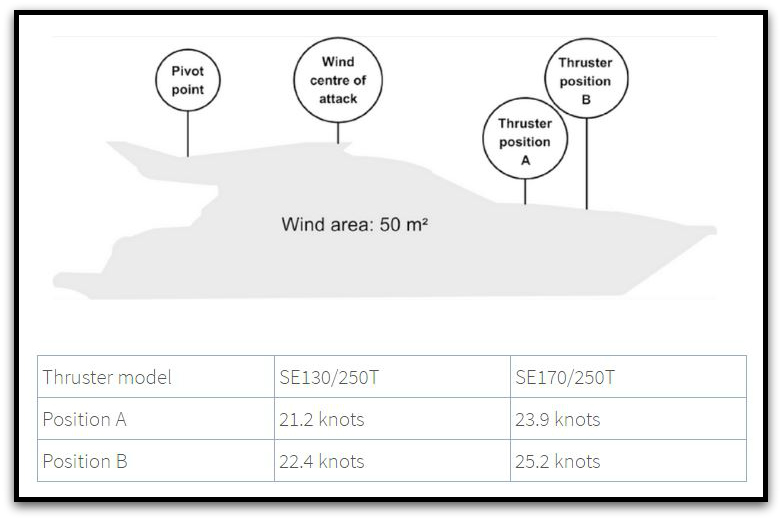
The example above shows the different wind speeds that two different thruster installations can counteract, and the increased leverage when the thruster is further forward.
If you cannot fit a tunnel in a satisfactory position, you might want to consider a retractable or external thruster instead.
Tunnel Diameter
It is wise to play safe by installing the largest tunnel diameter you can fit, within the guidelines of minimum depth below the waterline and tunnel lengths.
The reason for this is that the smallest tunnel diameters with a larger motor create fast water flow through the tunnel to achieve the rated output.
Typically, larger tunnels have lower water speed, which reduces the risk of water cavitation that impacts both efficiency and noise.
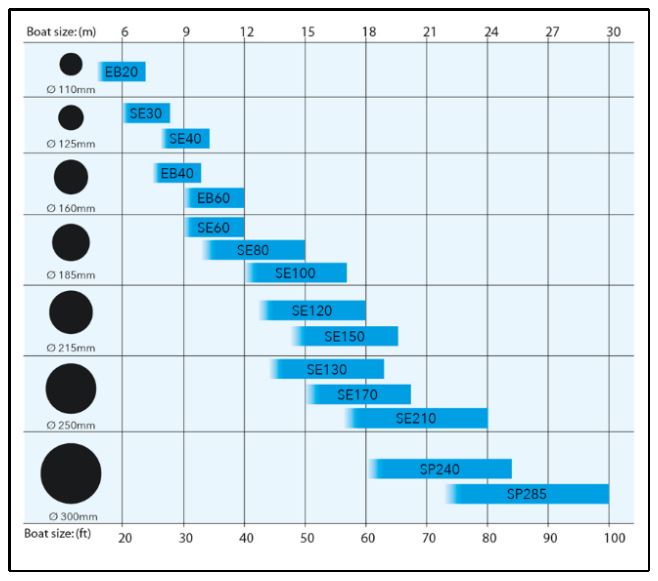
Voltage
Voltage drop (caused by resistance from cabling, main switch, fuse, and the like) might have a greater effect on thrust power than some manufacturers have led you to believe.
To obtain the rated performance of a thruster, it is necessary to allow for loss of voltage through the battery cables, main switch, and fuse.
Typically, in a 12V system, you will find that you only get 10-11 volts reaching the electric motor.
This is a significant reduction that affects the thruster’s output.
If you have decided you need 130 kilos of force for your vessel, but only get 110, you will probably be disappointed.
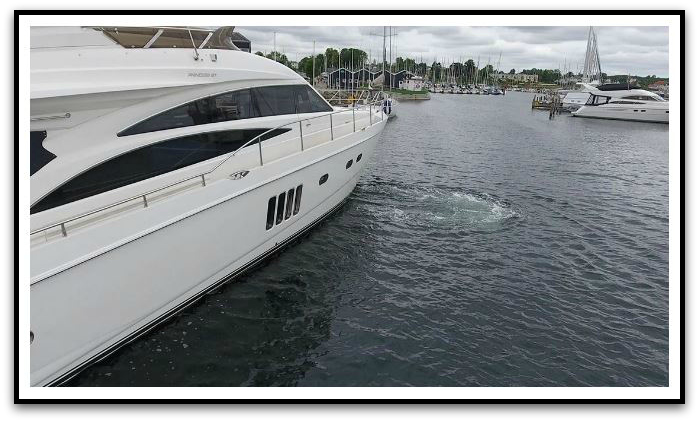
Make sure that you look at the rated thrust at say 10.5 volts, which is a typical value in a decent installation.
You can also consider installing a dedicated battery close to the thruster to reduce voltage drops through very long battery cables.
Remember that the battery needs an enclosed and ventilated battery enclosure if installed in a cabin.
As mentioned, some manufacturers state the rated thrust at ambitious voltage levels, and make it difficult to compare brands. Make sure you know the true thrust performance before deciding on a specific model.
Stern Thruster Performance
A stern thruster does not require more thrust to have the same effect as a bow thruster.
This is because the stern thruster is mounted outside the hull, and further from the boat’s pivot point. This is how it gains more leverage.
Depending on boat type and windage of the boat, the same size or the model below will, for most, be an excellent match to the bow thruster, if sized correctly when installed.
If there are obstacles in the water flow, or to and/or from the stern thruster, more thrust might be necessary to match the bow thruster.
Installing cowls can also be a good solution, guiding the water flow away from obstacles.
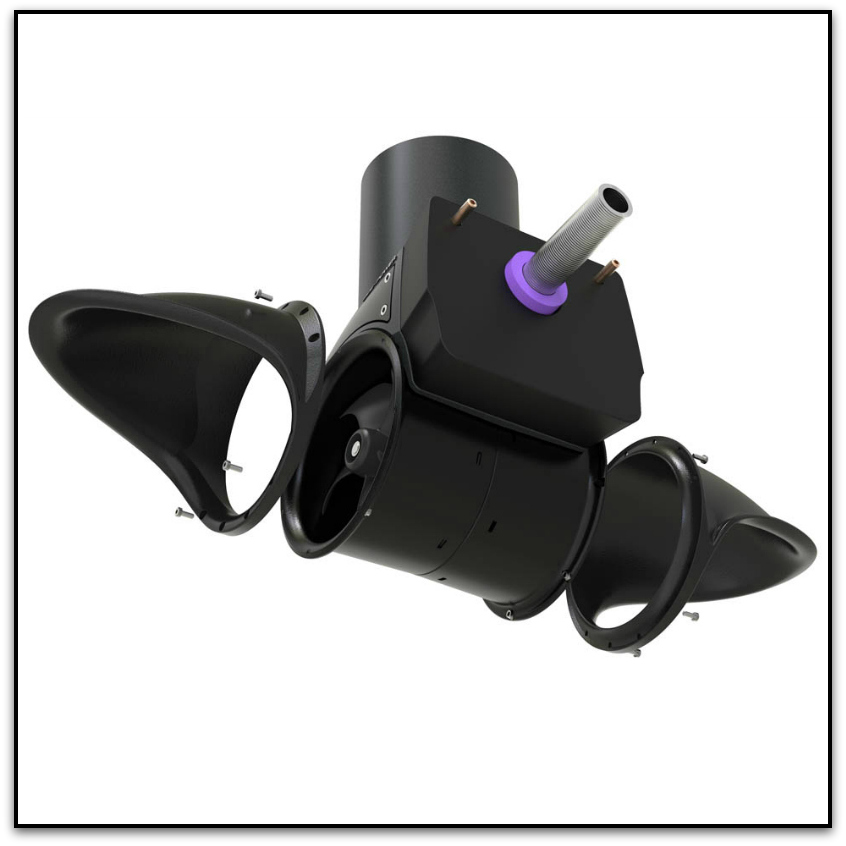
Fit the best you can afford…
Installing a thruster that is too small is a waste of money.
In the harshest conditions you need the extra manoeuvrability to dock your boat safely.
If the thruster system is under-sized and cannot give you the help you need when you’re caught nasty weather, your investment hasn’t paid off.
You rarely hear anyone complain about their thrusters being too powerful.
There are countless stories, though, where people have had bad experiences in situations where they did not have enough power to manoeuvre safely, which is worth remembering.
If you do go all in and install a powerful thruster system, you should consider upgrading to a proportionally controlled system.
Standard thrusters are on/off – full speed or nothing.
In a powerful system, you will probably need a lot less power in normal conditions, and putting a throttle in your thruster allows for quiet and controlled docking when running the thruster at lower RPMs.
Key points on Thruster Power
The two main factors that decide the correct thruster size are the vessel’s wind area and the boat owner’s demand for performance.
Always take into account the prevailing weather conditions in your area, along with an accurate idea of the maximum strength of tide.
Choose a thruster that can push the bow or stern against a minimum of 17.5 knots wind speed.
For comparison, a powerful thruster operates in winds of 22-25 knots.
The difference between the two may not appear much, but will offer very different user experiences.

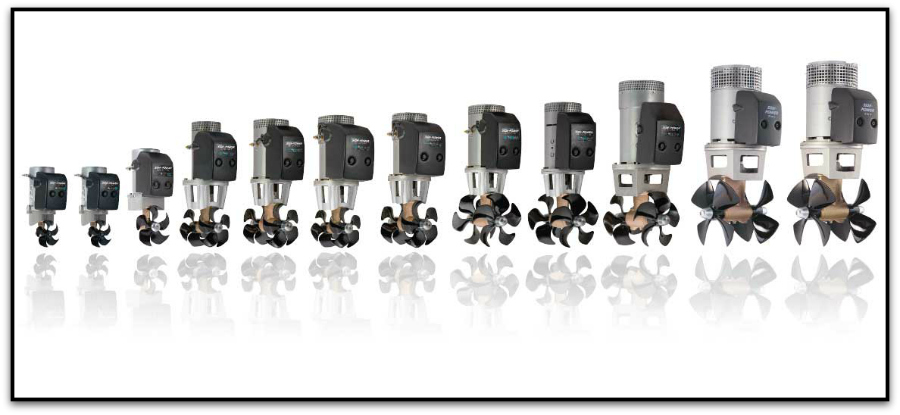
Leave a Reply
You must be logged in to post a comment.